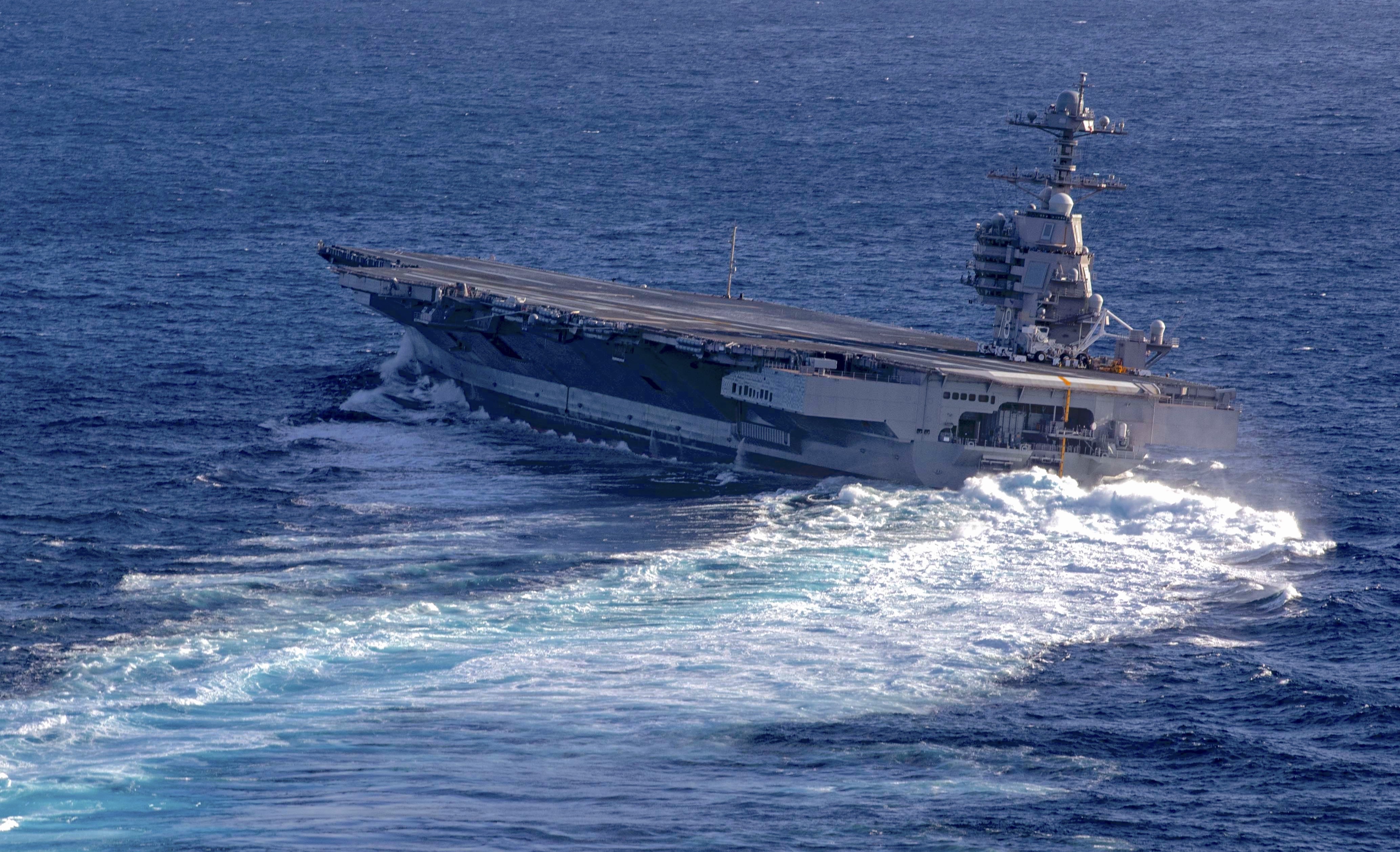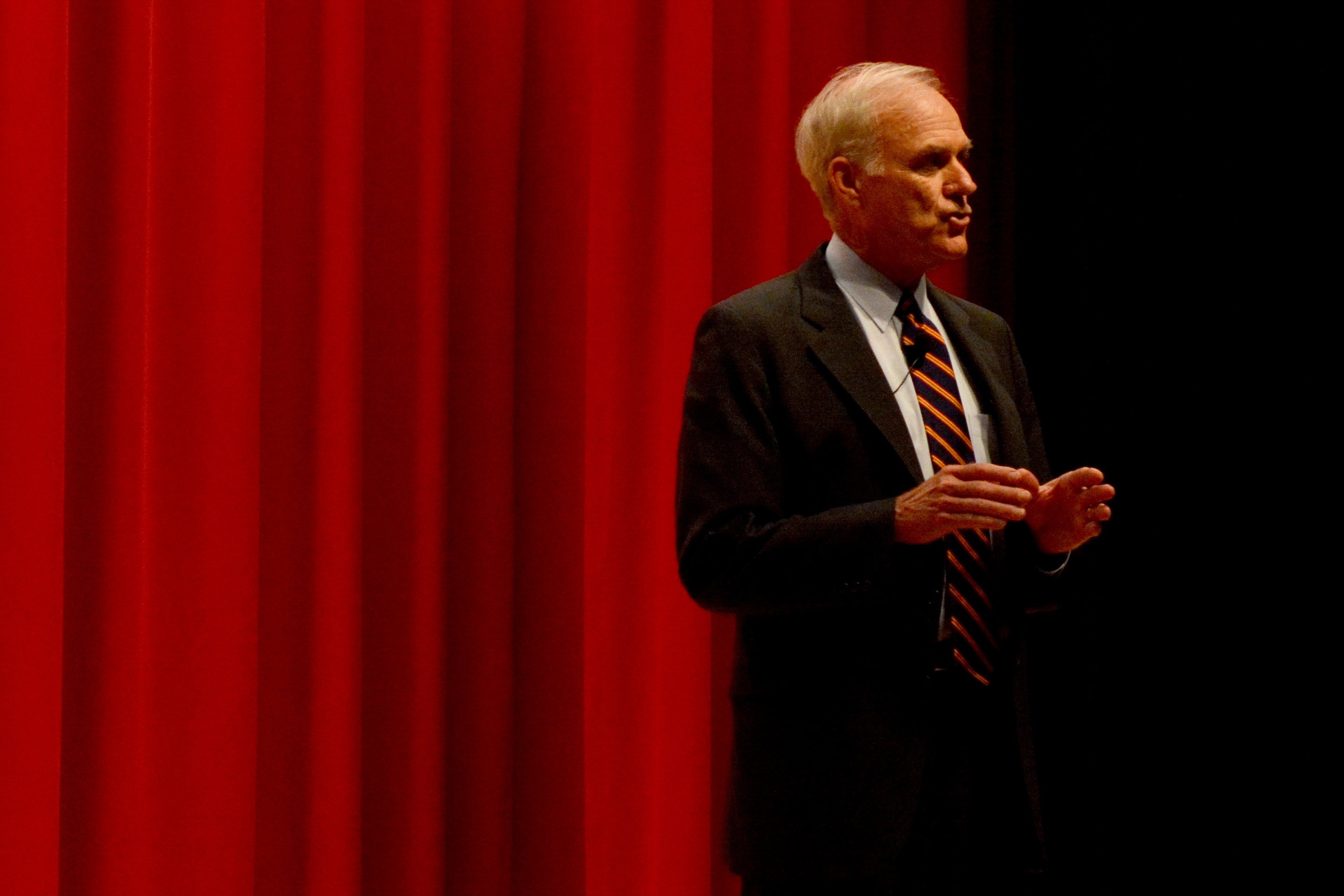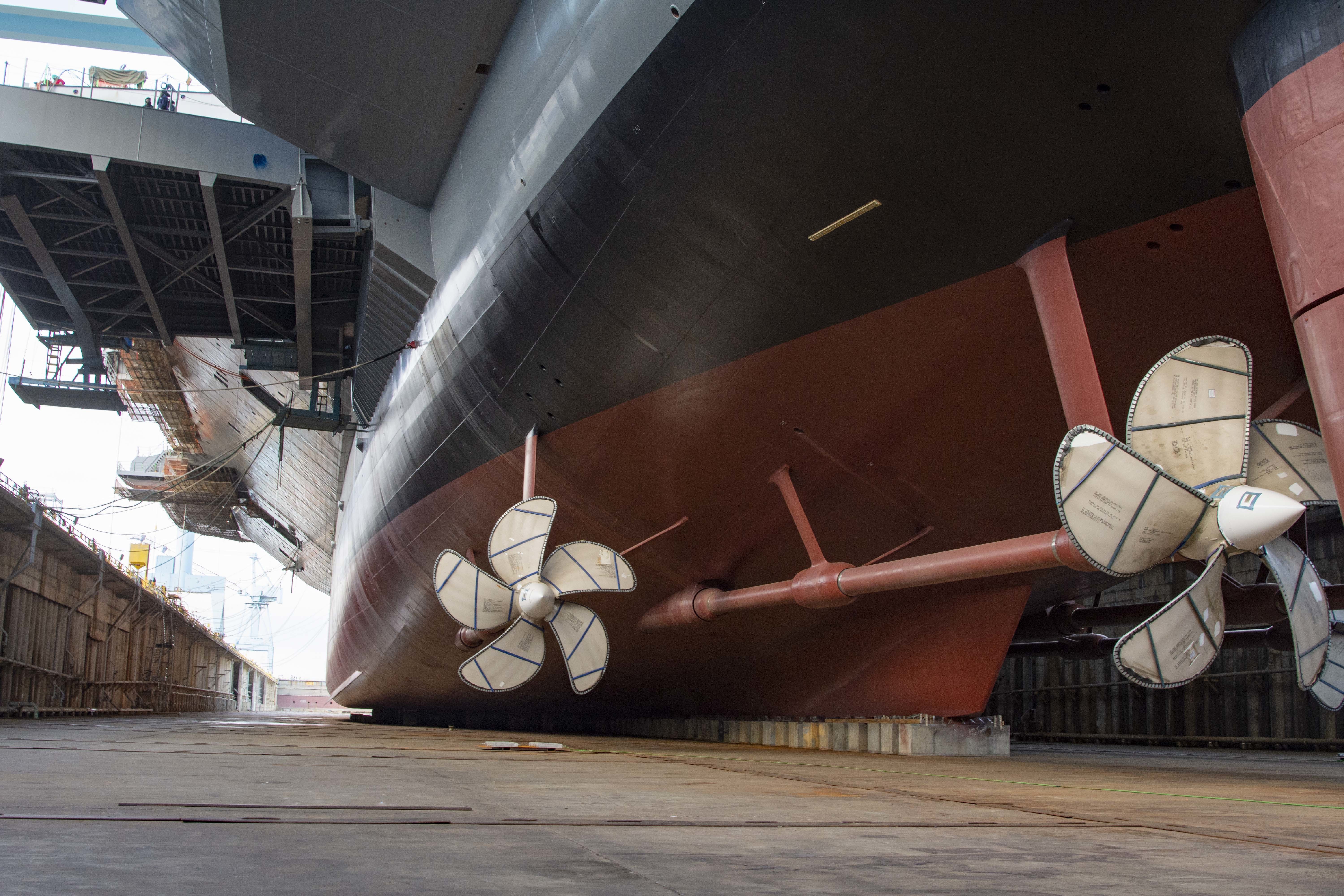
WASHINGTON, D.C. – The secretary of the Navy said a congressional cost cap on the first Ford-class aircraft carrier led to bad decisions that are reverberating today, and he hopes smarter discussions around cost, risk and requirements will be had for future ship classes such as the upcoming frigate program.
As the Navy and shipbuilder Huntington Ingalls Industries’ Newport News Shipbuilding continue to butt heads over the completion of the new carrier – and specifically the 11 Advanced Weapons Elevators that will move munitions to and from the flight deck – Secretary Richard V. Spencer said today that a short-sighted view of capping costs on the ship led to these ongoing problems. USS Gerald R. Ford (CVN-78) was tapped to debut five major new technologies, including the elevators. But whereas the other technologies were contracted for separately as government-furnished equipment, the elevators were designed and built as contractor-furnished equipment by Federal Equipment Company as a subcontractor to Newport News Shipbuilding. And when a congressional cost cap came into play, one of the levers the shipbuilder used to keep costs down was to skip building a land-based test site for the elevators – even though similar test facilities were built for other new systems such as the aircraft launching and arresting systems.
“Sometimes we’re our own worst enemy. I still go back and go, what was anyone expecting to have the second- and third-order effects of a cost cap? You don’t get anything for free, and you’re not going to drive quality by cost-capping. We have to start thinking differently when we go to cost control,” he said during a media roundtable at the Heritage Foundation today.
Asked how lessons learned on Ford could apply to other upcoming new programs such as the frigate, Spencer told USNI News that he would hope the first frigate does not face a cost cap of its own.
“We have to have an open discussion on first of class. Now, these are proven designs (competing for the frigate program), so it’s going to be a little different, but we are adjusting it here and there; yes, we should expect some hiccups. Expectation management, I think, is key,” he said.
Spencer said that, in his view of the industry, the number of qualified shipbuilders has shrunk so much that when the Navy begins a new program, in many cases industry demands that the Navy shoulder most of the risk and is only interested in building to the Navy requirement, rather than pitching out-of-the-box ideas.
“In some cases, you’d love to say, should we change ‘requirements’ to ‘requests,’ because if in fact you’re a shipbuilder, why should I definitively lock you in if you have better ideas? Where is the flow to say, if you want to get here, you might want to consider this, which is 80 percent of the solution, versus, I will drive to 100 percent of your solution but the cost is going to be up here,” Spencer said.

His suggestion that there should be more of a back-and-forth with industry about requirements is in line with what the Navy has done on the frigate program, where industry – not just shipbuilders interested in being prime contractors, but also lower-tier vendors – had frank discussions about cost versus capability and what new technologies and ideas could change how the Navy approaches its ship design requirements. Many in the Navy and in industry have told USNI News they’ve been very pleased with this process and expect to get much more capability from the frigate design than the Navy originally thought it could get for its money, thanks to these discussions that mirror what Spencer suggested.
“Have the expectations management discussions. And it’s difficult, I get it, because requirements serve a definite purpose,” Spencer continued.
“But it’s almost the inflexibility that came down from the mount carved in stone: thou shalt not adjust a requirement. At what cost, and at what percentage mission capability can you make a compromise?”
The secretary later said the Navy could and should be doing more to understand what a commercial equivalent might cost – comparing what Maersk might pay for a hull or for a ship system, for example. It might be that the Navy simply cannot use that commercial variant, but at least then an informed discussion could be had about why more money needs to be spent for more capability, whereas now he said the Navy likely overpays for a lot of gear because its requirements were never questioned.
On the issue of the elevators, Spencer was asked if the $197 million the Navy asked Congress to reprogram in the budget would be the last funds the service needs to get Ford fixed up, or if the service was likely to need to keep throwing more money at that new ship.
Spencer said he had “medium confidence” that the reprogramming would be the last of the funding needs.
“It’s first of class. … First of class is tough. If I look at what we’re doing to [the second-in-class ship, the future John F. Kennedy (CVN-79)], we’re down 3.2 million man-hours for where Ford was. 18 percent decrease. You look at what we’re doing on the elevators, what we’re picking up on – here’s a fine example to the way to look at it: on the elevators, one of the problems was we have to get a two-pound pressure differential in each deck on three-ton doors. Well, the way they designed it is you actually have to weld and cut the hinge to adjust it. Well, now we’re doing a hanging hinge on Kennedy. So we’re taking learning to the ship. I’d be remiss if I’d say that’s the last (funding request), to be very frank; I’d rather have the option to say we’re going to come for more than to say we’re capped off now. I feel good on what we’re finally learning on the end of this.”

Spencer in January bet President Donald Trump that the elevators would be fixed by the time Ford got out of its post-shakedown availability maintenance work at Newport News Shipbuilding, which was previously scheduled to happen in July. The PSA completion was pushed back to October, and the elevators are still not done despite Ford leaving the yard this week for sea trials.
Spencer explained that Newport News had showed him a detailed work chart before his bet to the president, and all the elevators were to be tested and certified by July. Spencer said he also knew that PSA was likely to be extended due to other challenges, meaning he had additional margin on the elevator work, and he said he had “high confidence” when he made his remarks to the president and put his job on the line.
The secretary said he made the bet in the first place “for a rally purpose, because what we weren’t seeing down there was the spring in the step of the people on the waterfront, to be very frank with you. It was business as usual. So we said, okay, here’s a rally point: we’re going to commit to this, I’ll commit to this.
“In May of this year, in a meeting down in Norfolk, Huntington Ingalls goes, oops, here we are, elevators aren’t going to be ready until the end of 2020, possibly 2021,” he continued.
“And that’s when I went, do they really know what they’re doing, to be very frank. That was a moment of inflection. Called up Tom Fargo, the [chairman of the board of directors], and I said, this is all hands on deck. Does the board of directors know what’s going on with management here, because our trust and confidence on this project, specific project of the elevators, has been eroded significantly. They said, yep, we’re all in. We had some frustrations even after that time, and that’s when [Assistant Secretary James Geurts] and I said let’s get a tiger team down there and let’s take this over as the general contractor and HII can sub to us. And that’s basically what’s happened this last three months: 22,000 work orders knocked down; we have seven elevators moving, four of which are certified; we’re getting after it. Are we late? Yes, we are. I went up to the president, explained it to him; he said it’s a complex system. Remember, he can fire me every single day, I serve at his pleasure, it doesn’t matter if the bet’s there or not. He said, it’s a complex system, keep knocking down the dragons.”





